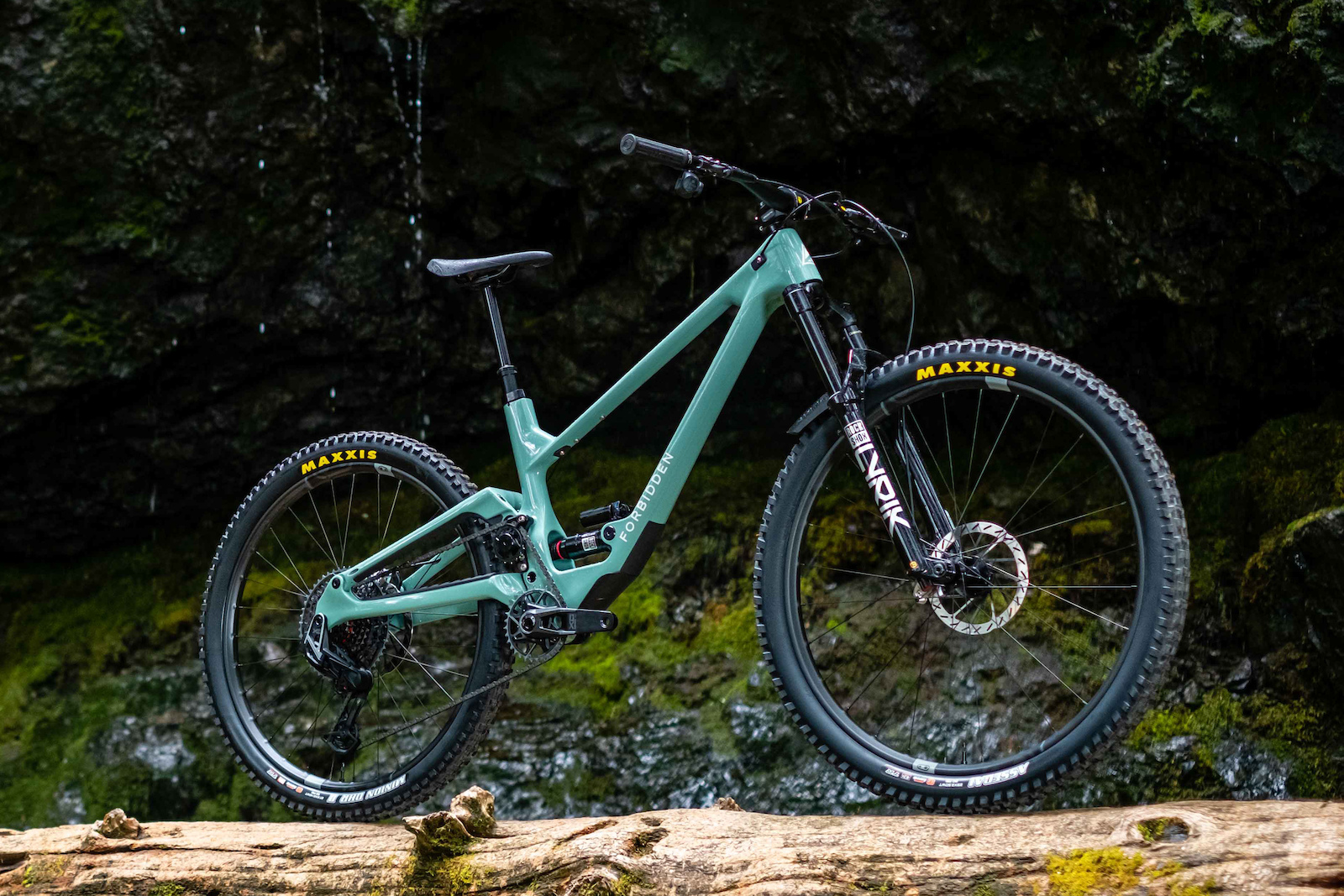The new Druid V2 holds onto the same amount of travel but now uses an “inverted four-bar” suspension design with revised kinematics and longer-lasting hardware all around. Furthermore, meticulous attention to reducing drivetrain drag has been implemented, the geometry has been stretched, and the frame can still adapt to fit a 29 or 27.5” rear wheel.
• Carbon frame
• 130mm travel / 150mm fork
• 29″ or mixed wheels
• 65° head tube angle
• 77º seat tube angle
• Reach: 440, 460, 480, 500
• Chainstay: 423, 437, 452, 466
• Weight:
• Sizes: S1, S2, S3, S4
• Price: $6,199 USD – $8,899 USD ($7,799 CAD – $11,199 CAD)
• Frame kit: $3,799 USD / $4,999 CAD
• Forbiddenbike.com
Prices range from $6,199 up to $8,899 USD for the decked-out RockShox / SRAM Eagle Transmission, and a frame kit is available if you prefer to custom build your own Druid.
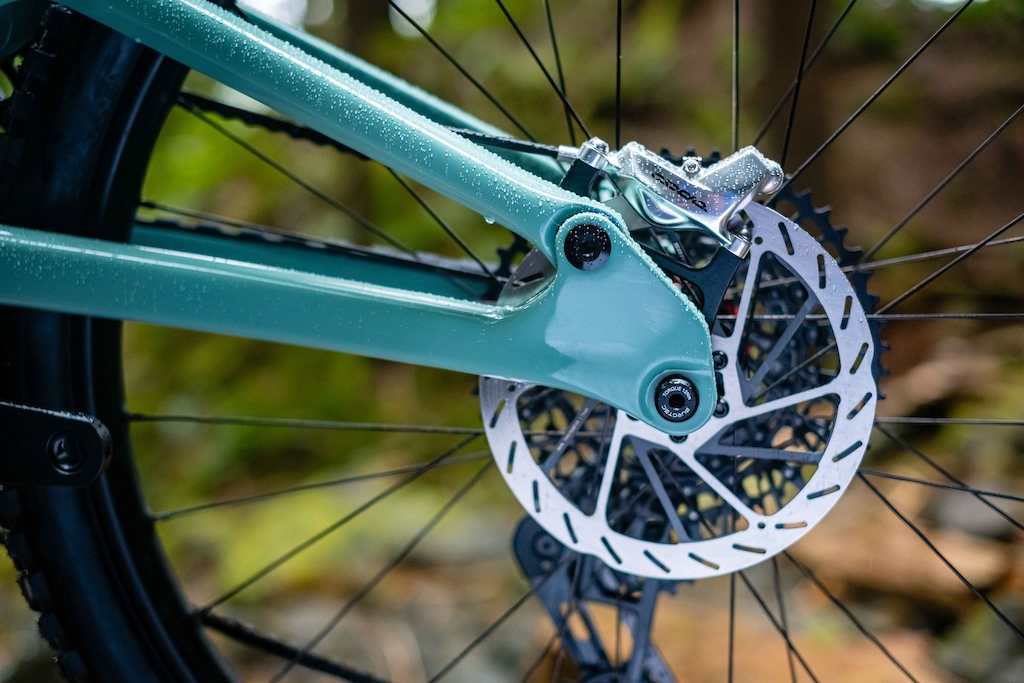
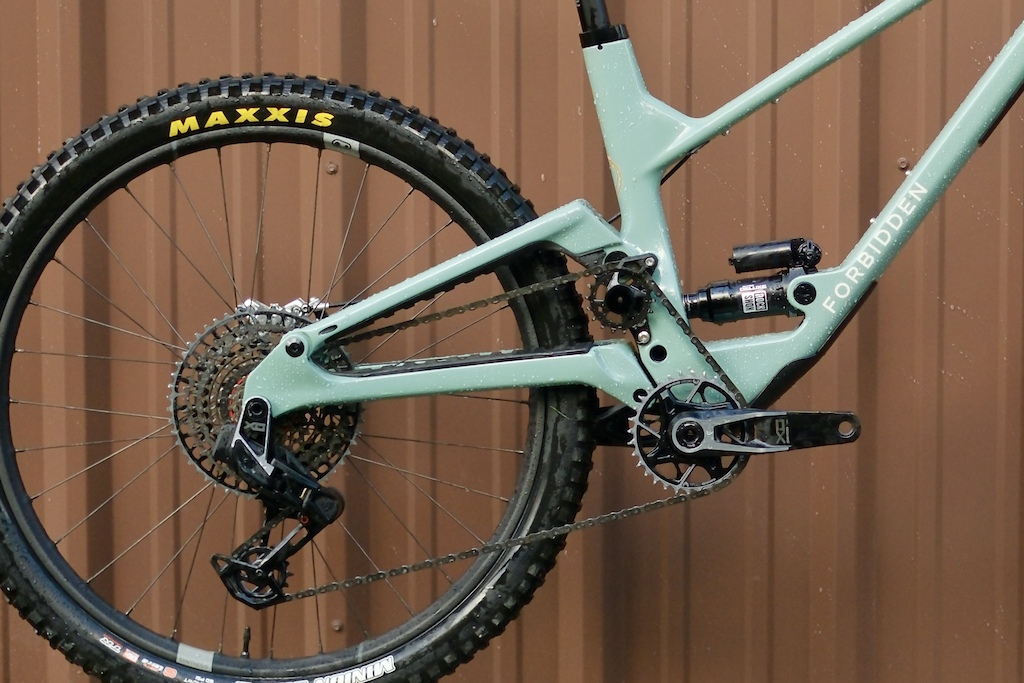

Frame Details
You don’t need to be an expert in suspension design to spot the differences between the first Druid and the second version. Even though the main pivot is still miles above the main chainring, the axle and brake caliper now sit on a floating arm, instead of a one-piece swingarm.
Forbidden moved away from the Ziggy link that previously converted the Druid V1 from a 27.5” to a 29” rear wheel. Instead, interchangeable chainstays are used for each wheel diameter, yet the rear center lengths are tailored for each frame size.
Moving to a multi-link suspension helped to remove constraints of the single high-pivot Druid V1. By tuning the position of the idler rearward from the main pivot, the amount of contact between the chain and chainring was increased, eliminating the need for a lower tensioner and reducing drivetrain friction. All frame sizes use a standard chain length of 126 links or less.
The idler position wasn’t the only factor carefully studied. Ollie Blight and the engineering team sweat over the tooth count, profile, and material – even the angle of the idler was taken into consideration to reduce friction. The number of teeth bumps from 16 up to 18, and after closely studying the wear patterns a new profile has been shaped into a hard-wearing, steel jockey wheel.
Carrying over what SRAM learned about the angled derailleur cage on their high-tech Transmission drivetrain, Forbidden offset the angular position of the idler wheel to 0.69-degrees to align perfectly with the middle of the cassette. This is optimized for both 52 and 55mm chain lines.
Overshadowed by the fresh V2 silhouette, locking collet-style axles roll on oversize bearings and the idler also receives a higher-quality bearing seal. There’s also the update to a trunnion mount shock that rides above a small storage compartment, just large enough for a spare tube. Plus, all of the frames have space inside the front triangle for a 770mL (26oz) water bottle.

Suspension Details
The Druid V2’s 130mm travel still retains a 100% rearward axle path from the high pivot design, although it is slightly less rearward than the V1. The builds and frame kits come with an air shock; Forbidden says that mounting a coil-sprung damper is also an option.
By moving to the inverted Horst-link design, Forbidden increased the suppleness of the rear suspension by lowering the anti-rise, or brake-induced force that compresses the suspension. At the same time, the pedal kickback is lowered when deeper in the travel too.
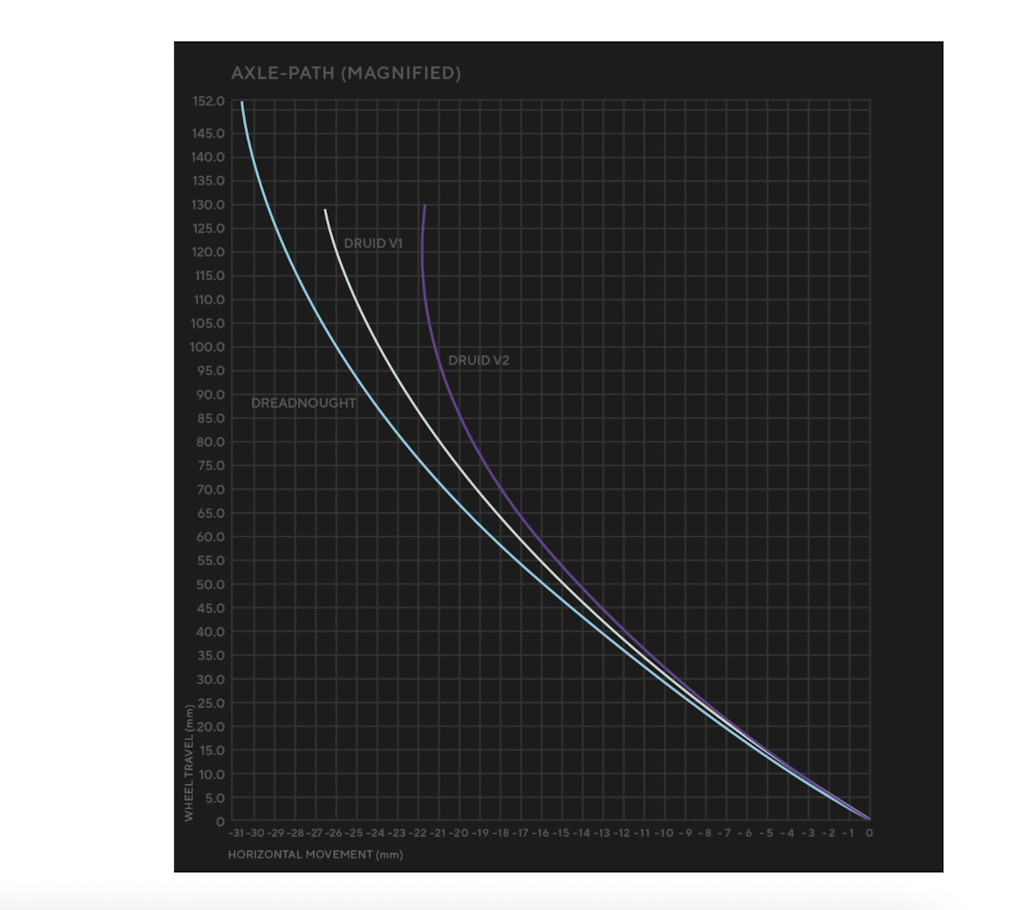
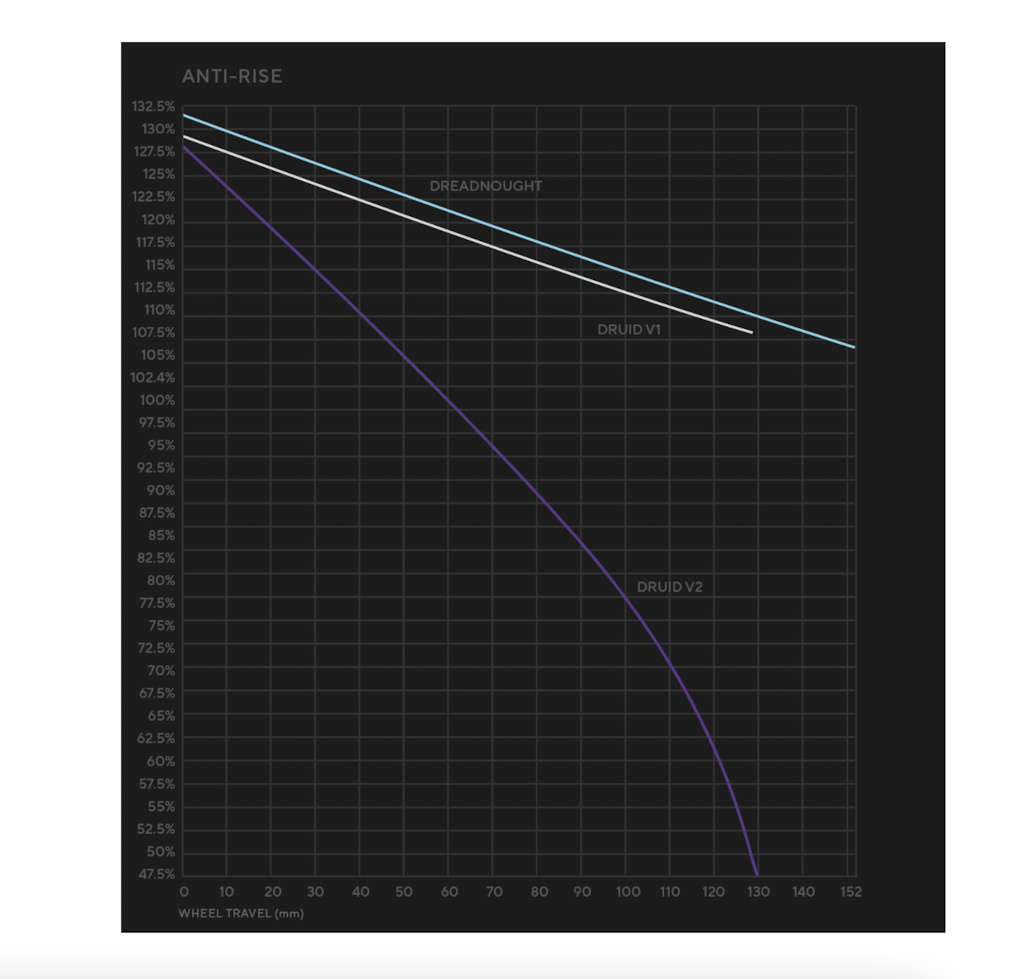
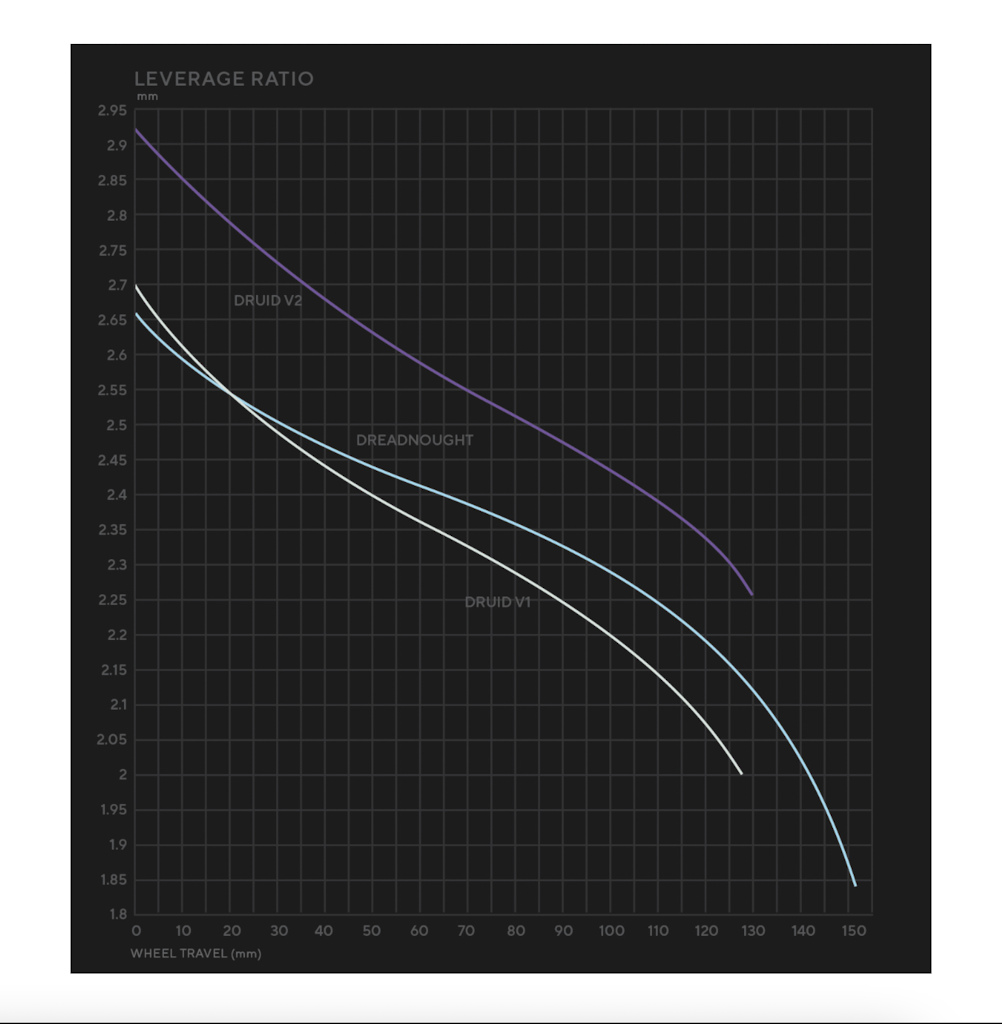
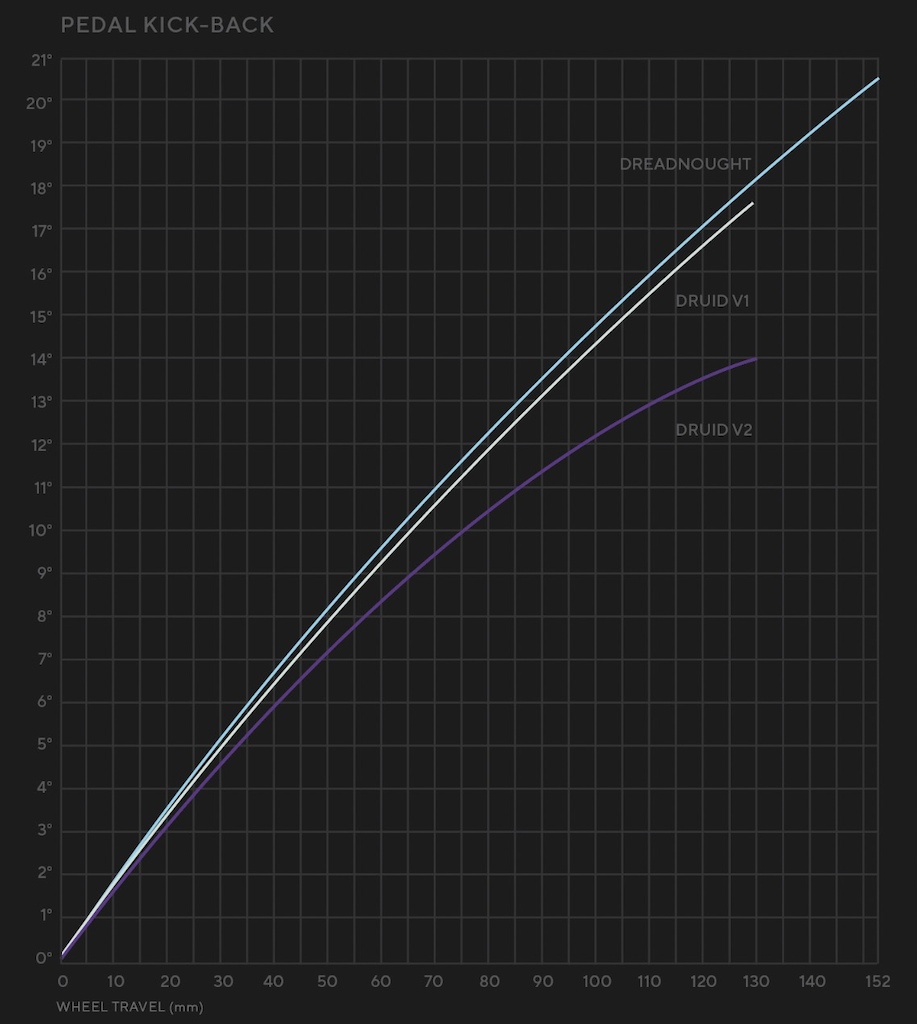
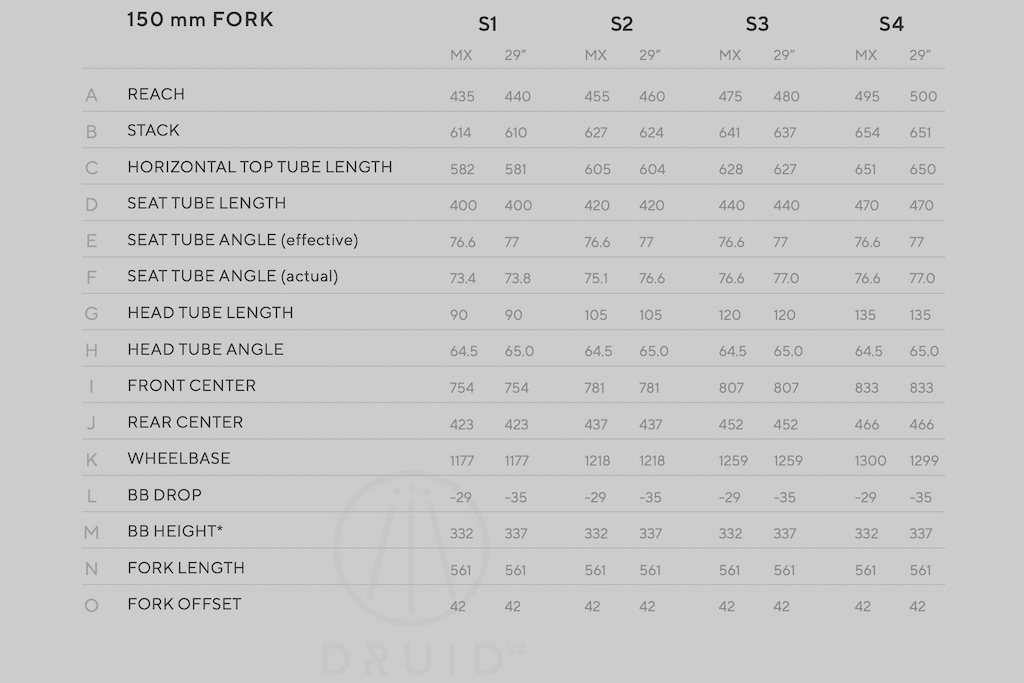
Geometry
In order to keep the character of the Druid as a steadfast trail bike, Forbidden didn’t go wild and rake the head angle out drastically, however, the reach numbers have been updated to a longer, more modern fit.
The Druid V2 comes in four frame sizes that are denoted by an “S” measurement scheme. S1 equates to a traditional size small frame. Each size has grown by 15 mm on the reach over the previous Druid.
I’m still not convinced that these arbitrary letters make any more sense than T-shirt sizing. I’d prefer to see some reference to a reach and/or a stack measurement, similar to ski lengths and widths, to quickly give the customer a stronger understanding of the fit.
One of Forbidden Bike Co’s strong beliefs, besides high pivot suspension designs, is a reach-to-rear center ratio that is carried across all frame sizes. For example, the S3 size Druid V2 has a 480mm reach and 450mm chainstay in the 29er setting, whereas the S4, the longest size, has a 500mm reach with a massive 466mm rear center.
To reduce redundancy, the rear center lengths are altered by moving the bottom bracket position fore and aft, since the geometry of the front triangle changes at other points.
When converted to a mixed wheel setup, the rear center length doesn’t change, but the head angle does relax 0.5 degrees and the reach tightens up by 5mm.
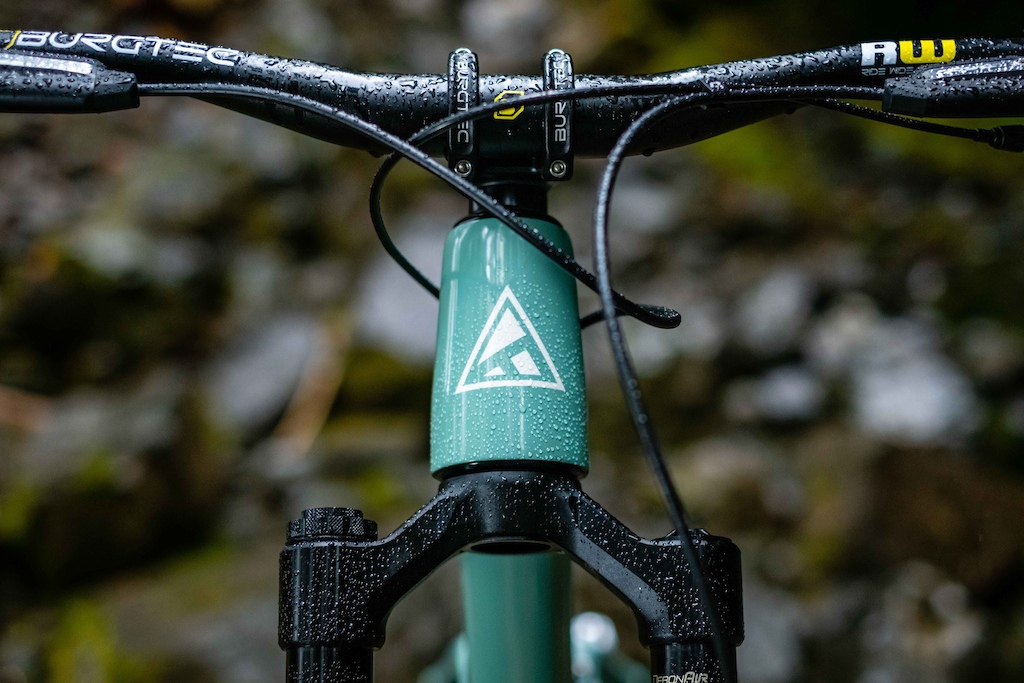
Pricing and Specs
Forbidden continues to build their bikes exclusively from carbon fiber, meaning there are no budget builds that feature an alloy frame, however, their pricing is on par with other high-end companies. The Druid V2 is available in two colorways and three build kits, or a frame option that includes a Super Deluxe shock. Each build or frame can be ordered in a 29 or mixed-wheel configuration for the same price.
A base model Druid V2 GX AXS RS costs $6,199 USD / $7,799 CAD / €7,499 EUR / £6,299 GBP and comes with a RockShox Lyrik Select and Deluxe, GX AXS drivetrain, and Code brakes.
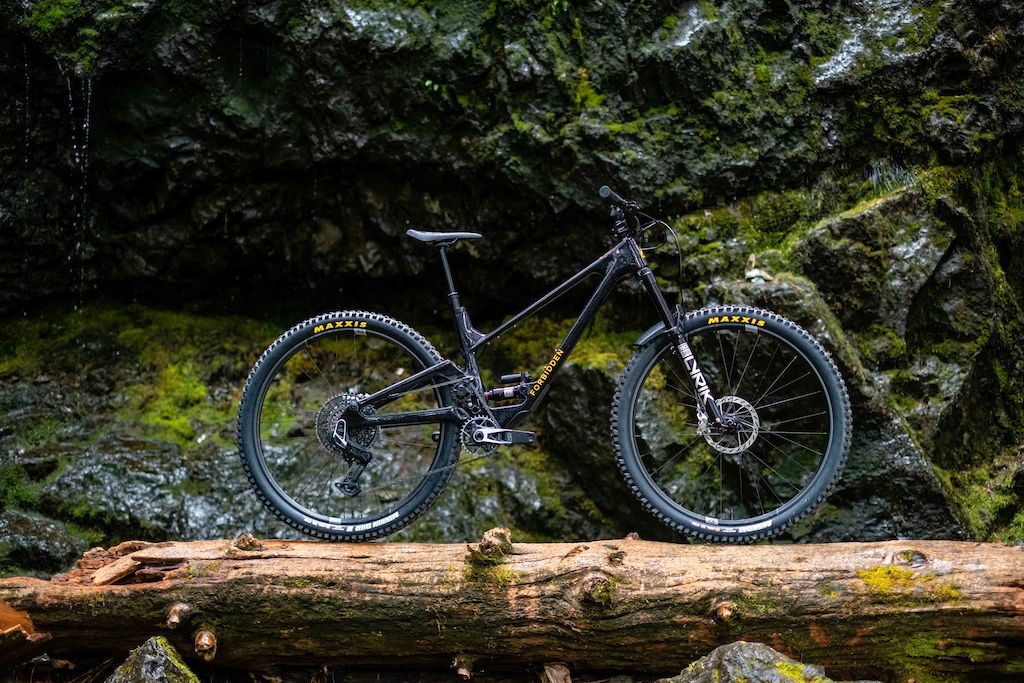
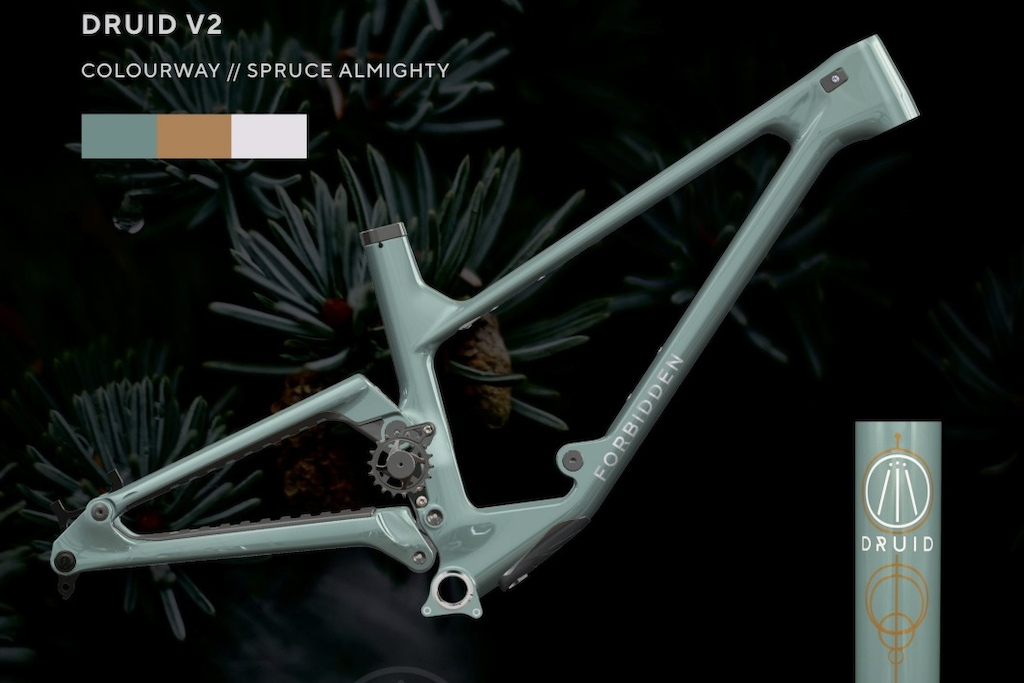
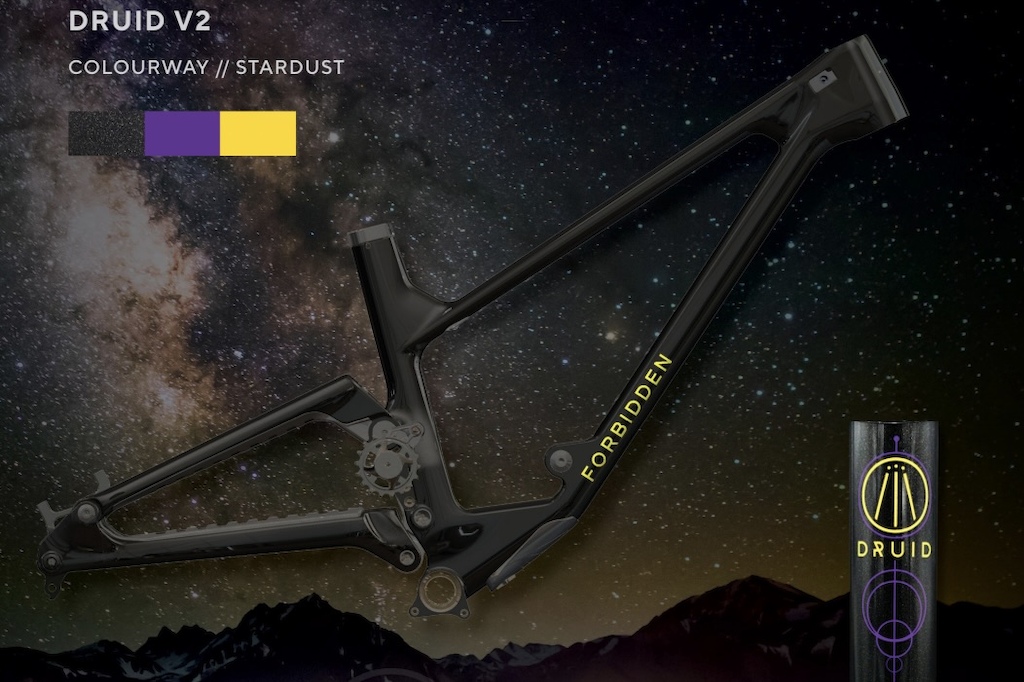
The $7,199 USD / $8,999 CAD / €8,599 EUR / £7,299 GBP kit uses Fox Performance SE suspension, a SRAM GX AXS drivetrain, Code Stealth Silver brakes, and Burgtec alloy handlebars
Then there’s the full meal deal SRAM XO Transmission top-tier Druid V2 that spares no expense at $8,899 USD / $11,199 CAD/ €10,599 EUR / £8,999 GBP. Crankbrothers takes care of the wheels with their Synthesis Enduro 11 Carbon series, plus the Code RSC brakes are of the new Stealth variety.
Frame kits will retail for $3,799 USD / $4,999 CAD / €3,999 EUR / £3,599 GBP.
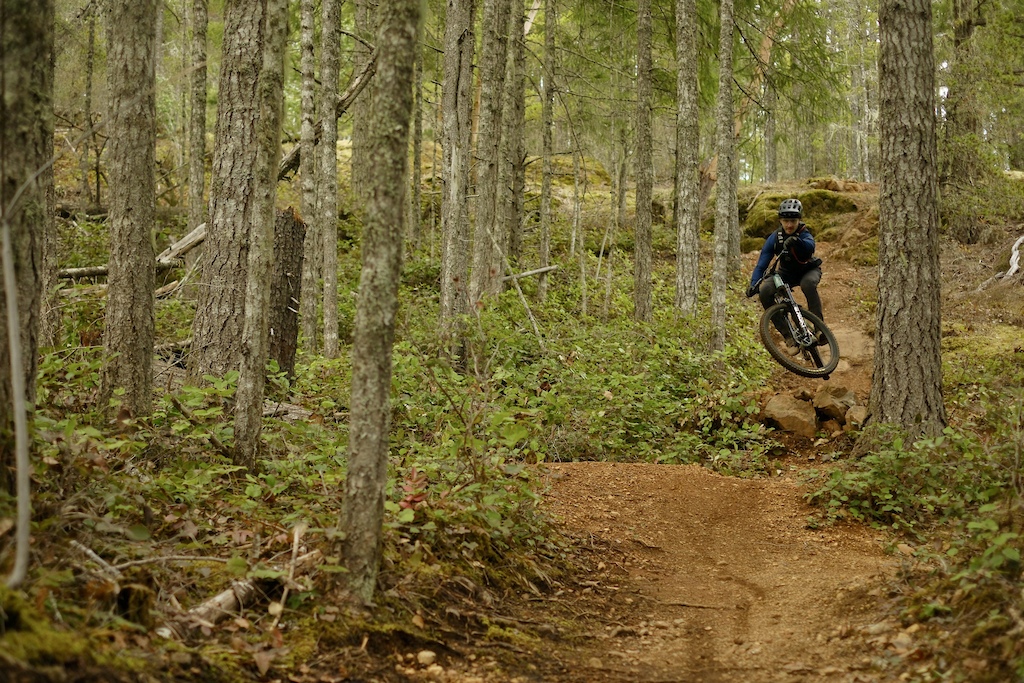
Ride Impressions
I’ve heard some riders describe the previous Druid as the downhiller’s trail bike, and while I can see some truth in that statement regarding the V2, it shouldn’t pigeonhole the 130mm travel machine into shining on descents only. In fact, old-school singletrack is where the rearward axle path and pedalling expertise of the Druid excel, but it wasn’t all smooth sailing.
I first set out on the S2 Druid in the 29er mode to hone in on the idea of a compact and compliant short travel bike built for Forbidden’s local trails of Cumberland, B.C. There’s a serious amount of singletrack pedalling to be had here that traverses a mix of loamy forest singletrack and chunky rock outcrops with less sustained steeps than around Squamish.
There was a certain nervousness about the steering that I couldn’t shake. Eventually, I pointed a finger toward the short stem and low bar. On the other end, the rear suspension left me questioning if it actually housed more than 130mm because the bike hauled down straight lines.
On day two, I traded for an S3 Druid with mixed wheels, a 475mm reach, a taller bar and the same length stem. I toyed with the pressure in the rear shock slightly, but eventually settled on 190 PSI to sit just under 30% sag. Then, all of my thoughts from the previous day were erased.
The balance was much more controlled and I never found the length of the ever-growing rear center to be particularly troublesome to switch directions or pull off the ground when asked. Between that high pivot design and Super Deluxe rear shock, the Druid ate up the bumpy rock outcroppings and carried speed superbly. Dragging brakes didn’t cause any concerns with the suspension firming up – if anything, I appreciate more versus less anti-rise to preserve the geometry.
The Druid is a solid choice for a singletrack lover because you can simply stay seated and don’t lose as much speed when pedalling across webs of roots. The seated position is upright and comfy, plus there’s a serious amount of climbing traction.
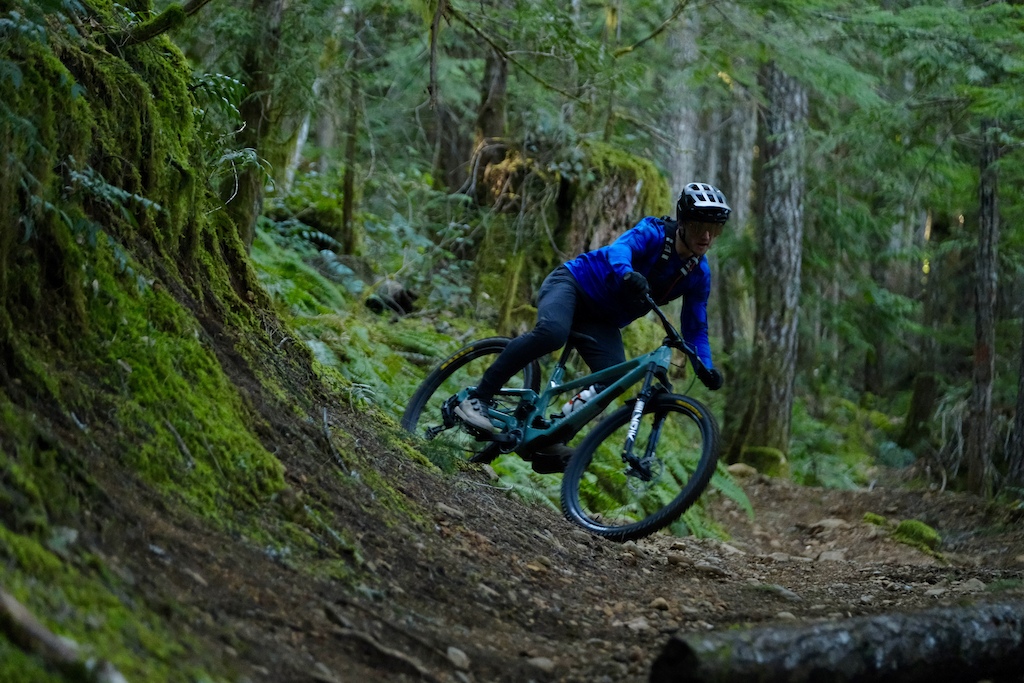
Thinking back on the trails around Forbidden’s headquarters and how they arrived on a high pivot 130mm travel trail bike now makes perfect sense. They’re physically demanding to keep the wheels rolling without hanging up on the abundant square edges. You don’t necessarily require oodles of travel, it just has to work effectively.
In terms of noise, the Druid is overall a silent bike. There were zero cable rattles and chain slap was close to undetectable. The only time I noticed the presence of the idler was climbing in the two tallest cogs at the end of a muddy ride.
With a few changes, like a softer compound front tire and larger brake rotors, I’d be excited to spend more time on the Druid V2 to push its limits on descents and put the revamped high pivot system through long-term testing.


